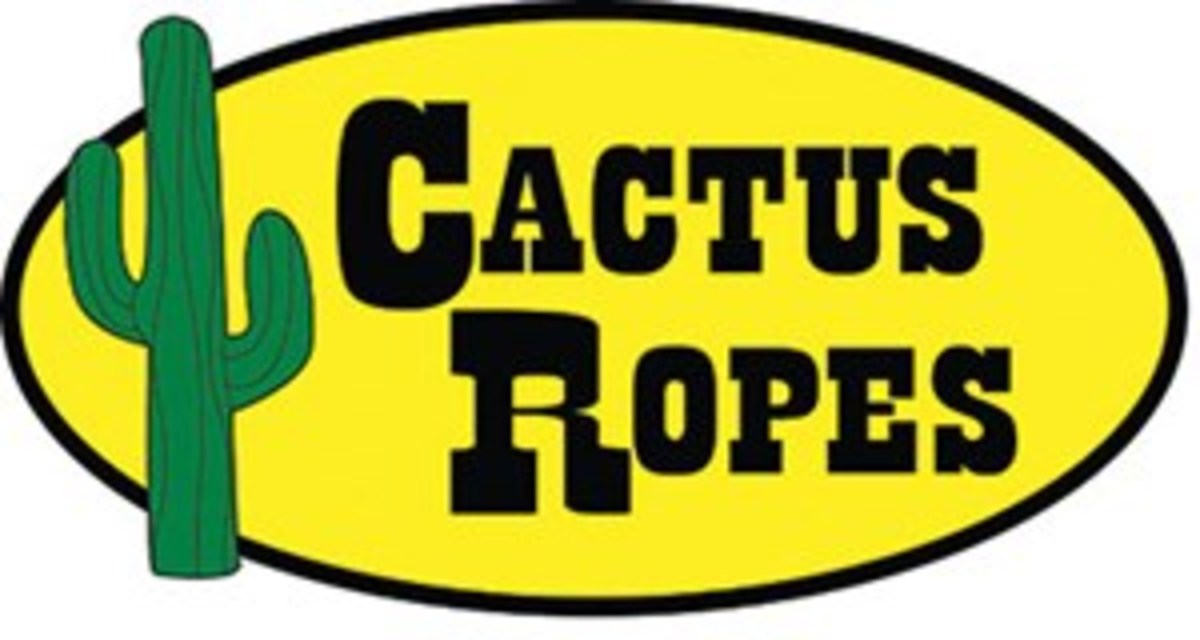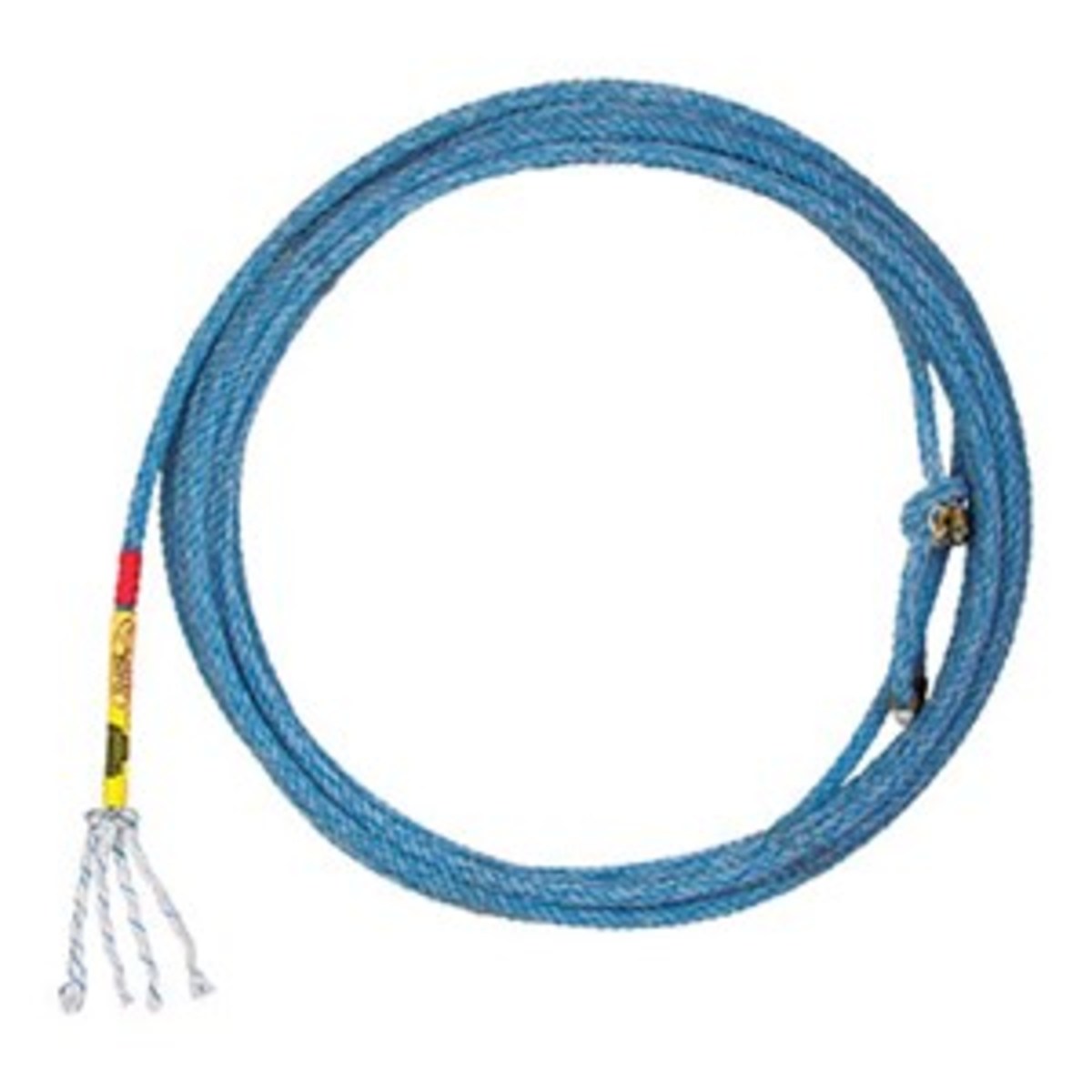Imagine being in the truck with guys like Dee Pickett or Mike Beers or JD Yates and rodeoing not with cell phones, but CB radios. The CB handle for NFR team roper Jack Stephenson was “Cactus Jack.”

Now you know how Cactus got its name. The iconic rope company founded by a bonafide pro team roper celebrates its 25th anniversary this May.
“Cactus Ropes was Jack’s idea,” said Mike Piland. “He’d been to the NFR and had just won the George Strait for the second time with Rich Skelton. He was kind of our hero in south Texas. The handicap system was just hitting, and we realized how many weekend ropers would come out and start roping if they knew certain boys wouldn’t show up and take their money.”
Stephenson, Piland and a third partner, Joe Mathews, started from a remote spot about 80 miles north of Laredo, and were at a serious disadvantage.
“It’s not like there were books to buy about how to make team ropes, and our competition was not going to tell us anything,” said Piland. “It was all trial and error. We had a machine built by an experienced rope-maker, but he’d never made a rope on it. Still, he was quite an engineer and we took a chance on it.”
After about a year, Barry Berg joined the team. Back then, he was unwittingly responsible for the name of their first successful head rope.
“Barry liked to use a special little head rope,” said Piland. “So he always made his a little different and marked it with a ‘BB.’ When his ropes came through, the kids in the back started calling him ‘Bad Boy Barry Berg.’ And Bad Boy stuck. We still sell it, and it’s our second-most popular three-strand rope.”
It had taken three or four years to develop a good line of head ropes (the Bad Boy) and a good line of heel ropes (the Omega)—and they were unprofitable years.
“We came over here one day to possibly shut the shop down,” recalled Piland. “We did the books and realized we’d lost our initial investment. But we had such a hefty debt on top of that, we couldn’t shut it down. We had to roll up our sleeves and make it work. Barry gets a lot of credit for sticking with me and making it work.”
Several 15- and 16-hour days would follow, as they continued to operate strictly on trial and error. Not much later, Allen Bach came along and asked for some pointers on starting a rope company. Instead, Piland and Berg proposed he use their ropes.
“Between Christmas and New Year’s in 1995, he decided to become a partner,” said Piland. “He had just won a world title, and after we brought him on board, people really looked at us and stores began to call, and it just took off after that.”
In the meantime, Bach met Denis Carroll, and in 1999, Carroll acquired Cactus Ropes. With his capital investment and business experience came breathing room and a much-needed marketing strategy. Then, January 2004, a devastating fire destroyed everything.
“Everything about a rope is combustible, so it’s very hard to put a fire out,” said Piland. “We share that with Classic, who had it happen last year. We understand what they’re going through and they’ll come back like we did, stronger. I thought our fire was the end of the world that morning and even a week later, but when we finally rebuilt the manufacturing plant we needed, we saw the fire as a huge blessing. It enabled us to grow into what we are now.”
Over the years, Carroll not only brought Cactus Ropes to a bigger stage but also acquired Fast Back Ropes, Heel-O-Matic, and Pro Equine (now Cactus Gear), and started Cactus Saddlery. Over the years, too, the crew developed some influential endorsees, the most famous of which is Trevor Brazile, for whom Cactus makes and markets the Relentless line.
“We tried to surround ourselves not only with good ropers, but good people,” said Piland. “We chose endorsees not only on their ability to rope but on their character, which was just as important.”
Cactus was also one of the first companies to invest in ropes for women. They made a great rope named for Tammy West, and more than 10 years after the TW Special, it was Cactus who partnered with Rope Like A Girl brand, anchored by Lari Dee Guy.
In fact, Guy helped them develop their new three-strand poly calf rope, Innov8, which Paul David Tierney used in two events to win the Timed Event Championships in March. Today, the Relentless Xplosion is still Cactus’ high-seller, but the brand-new Game Changer is starting to top the charts.

Twenty-five years after Jack, Mike, Joe and Barry laid the foundation, Cactus is one of our industry leaders. You can help celebrate the anniversary by registering on CactusRopes.com for giveaways or by visiting your local retailer for commemorative apparel celebrating a quarter-century of great ropes.
“This was just a dream,” said Piland. “We had no idea that team roping would grow to this point. We want to congratulate the leaders in this industry—the Denny Gentrys and the Digger Howards; the Brays and the USTRC and all the producers in the United States putting on ropings and encouraging new people to come into the arena.”
Comin’ in loud and proud, Cactus Jack. Thanks for keeping the hammer down.











